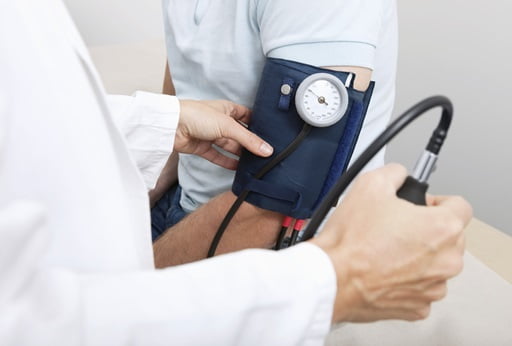
Cardio exercises to keep your ticker running smoothly
The heart is the human engine. Day after day, it supplies all organs with oxygen and the necessary nutrients - for a lifetime. This health tip tells you how to take care of your heart and keep the risks of cardiovascular diseases to a minimum.
Your heart is what keeps your body running. Each heartbeat pumps about 70 ml of blood around the body, which adds up to a total volume of between five and six litres per minute. Your heart beats about 100 000 times in a day. In order to keep it working properly, we need a constant supply of oxygen and nutrients, which are distributed throughout the body via the circulatory system. The reason we have a hollow, fist-sized muscle in our chests is to make sure that this system keeps running.
As with any other muscle, you can train your heart in order to keep it working well and prevent problems from developing.

Daily exercise
The magic word is "exercise". But you don't need to spend hours every day working up a sweat. Adults (between the ages of 18 and 64) should spend a minimum of 30 minutes exercising every day. You can easily get this minimum half-hour stint of exercise by taking short movement breaks during the work day, or by going on a walk after lunch which also aids digestion.
Moderate exercise
No matter how you exercise, the recommendation is that the level of intensity should at least be moderate. This means that you should start to sweat slightly but still be able to hold a conversation with a workout buddy. You can also ramp up the level of physical activity by increasing the frequency, intensity and duration of your training sessions over time.

Follow your heart
Determining your ideal heart rate can be confusing when it comes to sport. Your heart rate tells you how many times your heart beats in a minute, and ranges from a resting heart rate of between 60 and 80 bpm (beats per minute) to much higher figures when you are exercising. During your daily (moderate) exercise, your heart rate should not exceed 70% of its maximum level, and it should fall below 100 bpm within five minutes of stopping exercise.
Calculate your maximum heart rate
The rule of thumb for calculating your own maximum heart rate is your age in years subtracted from 220. A more precise figure can be arrived at using Sally Edwards' formula, which takes your gender and body weight into account as well as your age:
- Men: Maximum heart rate = 214 – (0.5 × age in years) – (0.11 × body weight in kg)
- Women: Maximum heart rate = 210 – (0.5 × age in years) – (0.11 × body weight in kg)

What is blood pressure?
Another important vital sign is your blood pressure. This is measured in millimetres of mercury (mmHg), with 1 mmHg being roughly equivalent to 133 pascals or 0.00133 bar. Blood pressure is expressed as a combination of two figures, systolic and diastolic pressure. The first figure measures the pressure when your heart contracts to pump blood through the arteries, and the second one measures the pressure on your blood vessels when the heart muscle relaxes.
Blood pressure: normal or too high?
Your blood pressure should ideally be somewhere between 120 (systolic) over 80 (diastolic) mmHg and 129/84 mmHg. Normal values for elevated blood pressure can range up to 139/89 mmHg. Higher figures (hypertension) pose a potential risk to health. Values of up to 159/99 mmHg are classed as moderate hypertension, while blood pressure of over 180/110 mmHg is considered severe.
Reducing your blood pressure
High blood pressure can be reduced by up to 10 mmHg with moderate, conventional endurance exercise such as (power) walking, cycling or swimming. If your blood pressure is merely elevated within normal parameters, the best way to reduce it is with high-intensity strength training, i.e. resistance training such as weightlifting, bodyweight exercises, climbing stairs, squats or press-ups.
Reducing your blood pressure takes time. You will need to exercise regularly for about four to eight weeks to bring your baseline blood pressure down. And that brings us to the most important part of cardio training: You need to summon up the motivation and integrate exercise into your daily routine, every single day.
A word of caution
People with pre-existing cardiovascular or lung conditions, or other health complaints, should consult their doctor before doing any form of exercise. If you are just getting started with a particular form of exercise, you should build up slowly and pay close attention to your physical condition. Chest pain, shortness of breath, weakness, arrhythmia or oedema (swelling due to a build-up of fluid in the body's tissues) during exercise may indicate cardiovascular or lung issues. If you experience any of these symptoms you should stop exercising immediately and seek medical advice.







